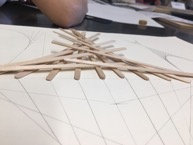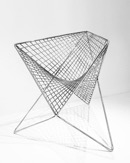Fashion Collapsing on Itself.
Fashion has been around us for centuries, however, fashion as an industry is a relatively new market. Fashion brands began developing rapidly since the 1950s, soon after the World War II, along with all the other industries which we contribute our money to everyday. More than 150 billion garments are produced every year, yet an American alone throws away about 70 lbs of clothing every year.
The purpose of fast fashion is to create low-cost collections that mimic the current luxury fashion trends. Thus, it is inevitable that fast fashion embodies unsustainability, as it is impossible for the mainstream fashion market to sustainably keep up with the absurdly numerous collections the high-end brands showcase every day.
Fashion, especially fast fashion, has become such a big influencer of industrial polluter, that it accounts for over 10% of our overall carbon emission and the second largest industrial polluter after oil. The apparel industry alone uses 70million barrels of oil annually to create synthetic fiber commonly used in our clothing. This synthetic fiber takes over 200 years to decompose, yet on average, these fast fashion garments are worn less than 5 times and kept for only 35 days.
Not only is the fashion industry contributing to 10% of world carbon emission, the process of creating synthetic fibers emit gasses such as N2O that are 300 times more damaging to the environment than CO2. Furthermore, the apparel industry alone, is guilty of over 70 million trees that are logged every year for fabric, and cotton alone, is censured for the world’s single largest pesticide-consuming crop that uses 24% of all insecticides and 11% of all pesticides globally.
To make matters even worse, the fashion industry is also convicted of being the second largest consumer and polluter of the planet’s water resource. One quarter of the chemicals produced in the world are used in textiles, and synthetic fabric used in our garments shed plastic microfibers into our waterways. To explain things simply, plastic microfibers account for 85% of the man-made materials found along ocean shores, threatening the marine life, and ultimately, us.
Now, the fashion industry has become a running treadmill that is impossible to slow down until it collapses on itself. There simply are just not enough resources available in this finite world anymore. There are not enough water ways that can be polluted, land to be destroyed, air to be polluted, and most importantly, human resources that can be exploited.
On April 24, 2013, the Rana Plaza in Bangladesh collapsed due to structural failure killing 1,134 people and injured almost 2,500 people. Rana Plaza was a sweatshop where cheap garments were made in poor working conditions to meet up with the low-budget and fast paced fashion trends in the other parts of the world, which of course, includes the United States and probably all the other countries you can think of.
Consumption is occurring within the richest nations of the world, yet the consequences are targeted on people of the poorest nations. Changes have been made since the 2013 Rana Plaza disaster, however, these changes are minor, and the public, including you and I are beginning or even may have forgotten about these consequences and the warnings our planet has been showing us. We have contributed to more than enough exploitation of our precious resources, and we cannot and should not contribute further into destroying them any further.













